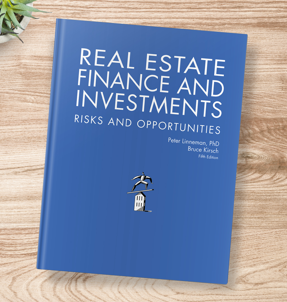|
Listen to this post if you prefer
|
Wharton Emeritus Professor Peter Linneman tells us what reasonable splits are for total cash flows split between Operating and Residual.
Bruce Kirsch: One of the things that we look at in the textbook when we look at a pro forma, let’s say it’s a 10 year hold period, is when all is said and done and when the dust settles, we have some net cash flow to equity number which includes both operating period cash flows and then the net proceeds from the sale after any debt has been repaid.
And one of the metrics that investors, especially institutional investors like to look at is, what’s the percentage of that total net cash flow that is related to just the residual versus the operating period? And so, there is some threshold above which investors don’t want to go, in other words, a really terrific sale can absolve a lot of sins along the way. But where’s sort of the safe zone where you want to get?
PETER LINNEMAN: It depends, interestingly we’re in an odd moment in history because of these extremely low interest rate environment that exist today, where your alternative is a 10 year treasury at one and a half, 1.7% and it has created a situation where for really high quality assets, really high quality cash streams. And very liquid markets that people want to be in, central New York, central DC, the cap rates have gotten bid to a very unusual position where in a seven year hold you may only be getting 25%, 30% of your investment back through cash flow over a seven year period and 70% of it’s coming from the residual.
I say that’s an anomaly of that for those assets the cap rates have gotten very low, the spread over treasury is very low, and treasury is low and so you aren’t getting much of your money back and institutions are kind of swallowing hard and saying, yeah but it’s such a great asset in an uncertain world.
More normally, I would think that the world more normally in my career says I’m going to hold at 7 years, I roughly want half of my money back from cash flow over the seven years and I’ll take the rest of my return from the residual.
And if you think about it, it says gee, if I can get a 7% cash on cash for seven years, there’s no magic to it, again, it depends on the nature of the property. You show me something very risky, I’ll give you a great example. There’s a place called Williston, North Dakota where the fracking related oil fines have caused an explosion.
So, here’s nowhere land right? There’s nothing near it, you have to truck everything in, and by the way it is a huge economic growth area as long as oil prices stay above $70 a barrel. And what happens if oil prices fall to $68 a barrel? Well, it’s no longer profitable to extract the oil. Shut down in a heartbeat and suddenly all this drilling stuff will stop until prices go back up above $70 a barrel.
You talk about a market like that where the only reason they’re there is because oil is above $70 a barrel and as long as it’s above $70 a barrel there’s a lot there, but if not, there’s nothing there, it’s a ghost town. Tell you what, I better get all my money back in two to three years, all of it back in two to three years. Because I have no visibility on what the market looks like for oil in three years. I mean, I can make a guess but if I’m going to where it is either a ghost town or a boomtown on a razor’s edge, I tell you what give me all my money back.
Afghanistan, suppose I gave you a building that you could build and leased to the US government for two years in Afghanistan. So if you build it, the US government will lease it for two years. You’re going to tell me I want all my money back on a profit in two years from cash flow because you’re afraid that if the US government leaves in two years, you’re stuck with a building in Afghanistan nobody wants and I’ve got to get all my money and profit.
So those are kind of the extremes but if I had to say on a seven-year-old norm, 35% would be on the low side, 75% of my money from cash flow would be on the high end, 50% being kind of on the most normal leverage. This is not with abnormal leverage. That would be the range.





